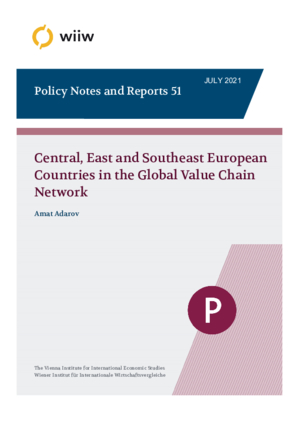Central, East and Southeast European Countries in the Global Value Chain Network
wiiw Policy Note/Policy Report No. 51, July 2021
26 pages including 6 Tables and 6 Figures
The policy brief examines the position of Central, East and Southeast European (CESEE) countries in the global value chain (GVC) network. Effective integration in global value chains has been recognised as one of the important ingredients of economic development. The analysis uses the multi-country input-output database recently developed by the Vienna Institute for International Economic Studies, covering the period of 2005-2018, to construct and examine the topology of the GVC network focusing on the CESEE region. We show that the CESEE segment of the GVC network has a core-periphery structure with several sectoral clusters forming the closely intertwined core centred around Russia's mining, petroleum and metals industries, as well as the value-added linkages formed by Central European countries with Germany's automotive sector. While these specialisation patterns have intensified over time, the advanced CESEE countries have also managed to diversify their participation in regional value chains. At the same time, a large part of the CESEE region, particularly, the Western Balkans, remains only marginally integrated in the GVC network, calling for additional policy efforts to boost their competitiveness and unlock the potential for a more intensive participation in cross-border production sharing in the region.
Keywords: global value chains, CESEE countries, network analysis
JEL classification: F10, F14, F15
Countries covered: non specific
Research Areas: Macroeconomic Analysis and Policy, International Trade, Competitiveness and FDI
